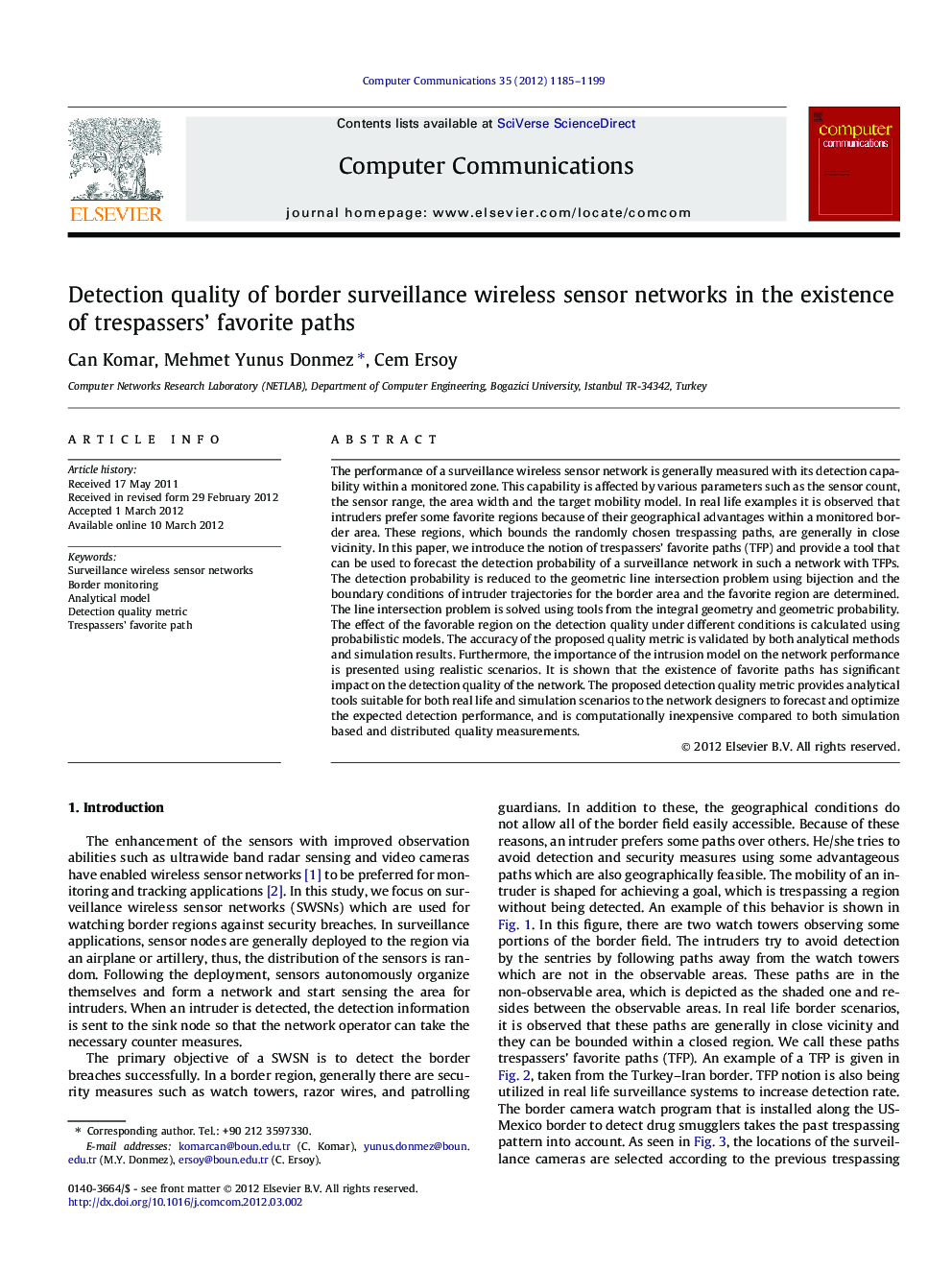| Article ID | Journal | Published Year | Pages | File Type |
|---|---|---|---|---|
| 448564 | Computer Communications | 2012 | 15 Pages |
The performance of a surveillance wireless sensor network is generally measured with its detection capability within a monitored zone. This capability is affected by various parameters such as the sensor count, the sensor range, the area width and the target mobility model. In real life examples it is observed that intruders prefer some favorite regions because of their geographical advantages within a monitored border area. These regions, which bounds the randomly chosen trespassing paths, are generally in close vicinity. In this paper, we introduce the notion of trespassers’ favorite paths (TFP) and provide a tool that can be used to forecast the detection probability of a surveillance network in such a network with TFPs. The detection probability is reduced to the geometric line intersection problem using bijection and the boundary conditions of intruder trajectories for the border area and the favorite region are determined. The line intersection problem is solved using tools from the integral geometry and geometric probability. The effect of the favorable region on the detection quality under different conditions is calculated using probabilistic models. The accuracy of the proposed quality metric is validated by both analytical methods and simulation results. Furthermore, the importance of the intrusion model on the network performance is presented using realistic scenarios. It is shown that the existence of favorite paths has significant impact on the detection quality of the network. The proposed detection quality metric provides analytical tools suitable for both real life and simulation scenarios to the network designers to forecast and optimize the expected detection performance, and is computationally inexpensive compared to both simulation based and distributed quality measurements.
